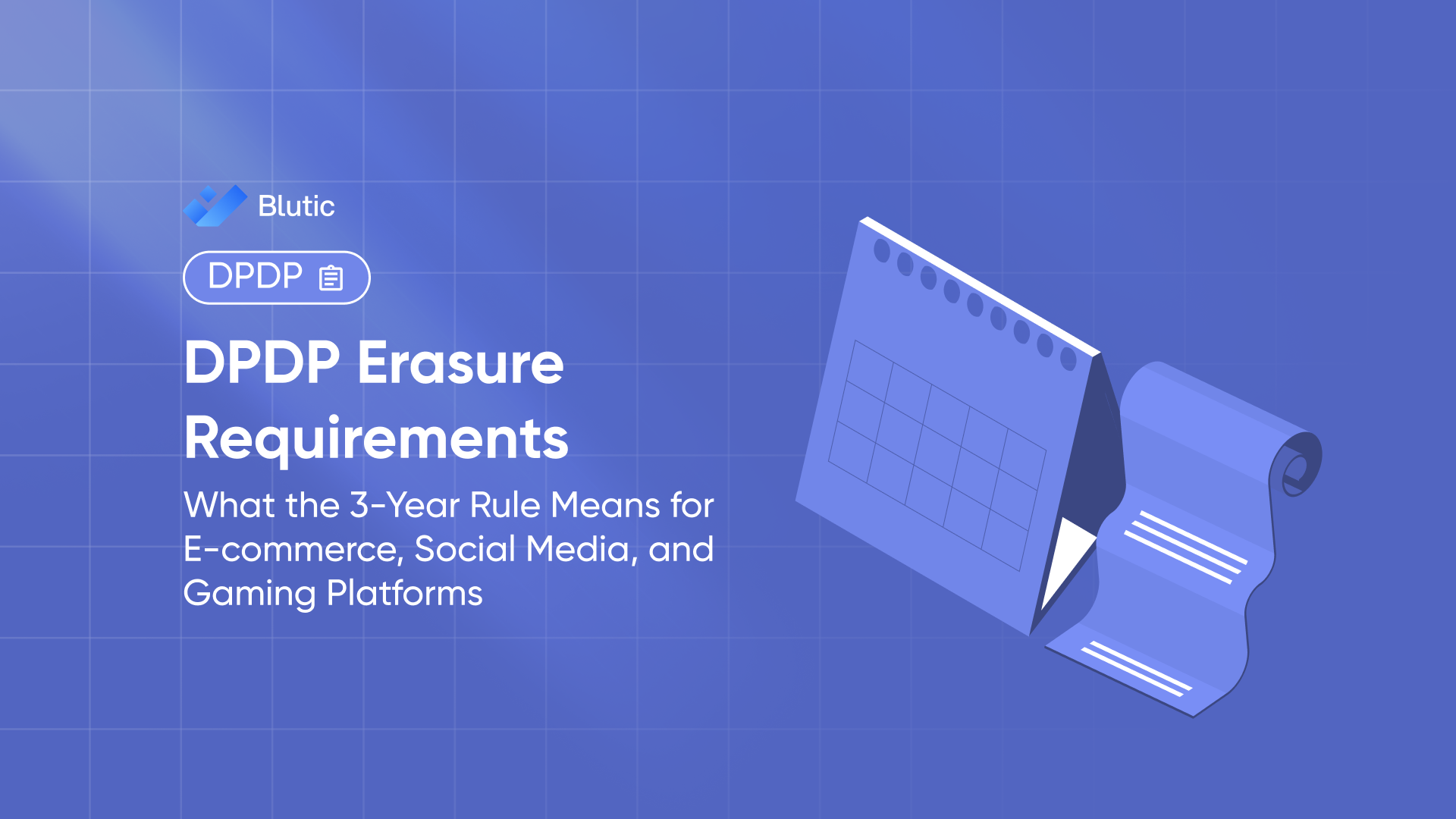GDPR vs DPDPA: What Indian Businesses Need to Know

GDPR vs DPDPA: What Indian Businesses Need to Know
Introduction
With the enforcement of the Digital Personal Data Protection Act (DPDPA) in India, businesses are facing a major shift in how they handle user data. While many are already familiar with the General Data Protection Regulation (GDPR) from the European Union, the Indian DPDPA brings a localized set of expectations that require careful alignment.
If your business operates online, handles user data, or targets customers in India, understanding the similarities and differences between GDPR and DPDPA is crucial to avoid non-compliance penalties and maintain user trust.
What Is GDPR and What Is DPDPA?
GDPR (General Data Protection Regulation) is a comprehensive data privacy regulation that governs the use of personal data of EU citizens. Enforced since 2018, it applies to any organisation inside or outside Europe that processes EU user data.
DPDPA (Digital Personal Data Protection Act, 2023) is India’s data protection law designed to address the digital privacy needs of Indian citizens. While inspired by GDPR, it focuses on Indian legal, social, and operational contexts.
Key Similarities
Both regulations are built on similar privacy principles such as lawful and fair data processing, data minimization, purpose limitation, and user consent. They also emphasize the importance of transparency, giving users access to their data, and ensuring organisations implement strong data security measures.
Important Differences Between GDPR and DPDPA
Despite similarities, there are critical differences businesses must understand:
- Scope and Applicability: GDPR applies globally to any entity handling EU citizen data, while DPDPA primarily applies to entities processing digital personal data of Indian citizens.
- Consent: Both require clear and informed consent, but DPDPA introduces the concept of “deemed consent” allowing processing in certain legitimate contexts without explicit permission, such as for employment or public interest.
- Age of Consent: GDPR sets the age of consent at 16 (with member states allowed to lower it to 13), whereas DPDPA fixes it at 18 across the board.
- Regulatory Authority: GDPR is enforced by individual Data Protection Authorities (DPAs) in each EU country. DPDPA will be enforced centrally by the Data Protection Board of India.
- Cross-Border Transfers: GDPR permits data transfers to countries with “adequate” privacy protections. DPDPA allows transfers to countries notified by the Indian government a more discretionary mechanism.
- Penalties: GDPR can fine up to €20 million or 4% of global turnover. DPDPA fines can go up to ₹250 crore, making it one of the strictest regimes in the APAC region.
- Data Subject Rights: GDPR grants broad rights including data portability and objection to processing. DPDPA offers rights like access, correction, erasure, and grievance redressal with some differences in implementation detail.
Why GDPR-Compliant Doesn’t Mean DPDPA-Compliant
Many businesses assume that GDPR compliance gives them automatic coverage under DPDPA. But DPDPA’s specific provisions like deemed consent, age requirements, and regional enforcement require a separate layer of localization.
Compliance with GDPR is a strong foundation, but not a full solution for Indian legal obligations.
How Blutic Helps You Navigate Both
Blutic is built to handle both GDPR and DPDPA compliance through a unified, region-aware platform. It helps businesses:
- Show location-based cookie consent banners
- Categorize cookies clearly with opt-in controls
- Record and store user preferences with timestamps
- Offer granular consent management for specific data purposes
- Integrate with tools like Google Tag Manager, Shopify, and WordPress
- Maintain consent logs for audit readiness
Whether you're an Indian business expanding to Europe or a global company entering India, Blutic ensures you're compliant, user-friendly, and future-proof.
India’s DPDPA reflects a maturing digital landscape, demanding accountability from businesses handling personal data. While it borrows foundational elements from GDPR, it introduces its own framework and enforcement style. Understanding these differences and acting early is the key to risk-free, trust-centric operations.
Blutic helps Indian businesses confidently navigate this evolving space by simplifying compliance without compromising user experience.
Frequently Asked Questions
No. DPDPA introduces specific requirements that go beyond GDPR, particularly around deemed consent and age-based processing.
Penalties can go up to ₹250 crore depending on the nature of the violation and failure to meet consent or processing standards.
More Blogs
Get the indise scoop: the latest tips, tricks, & product updates
%20.png)




